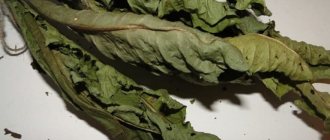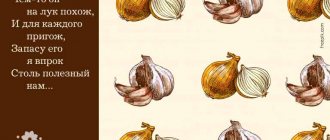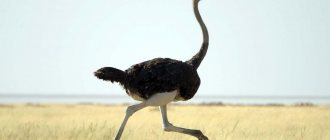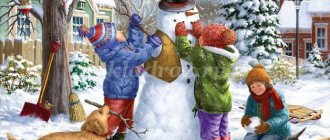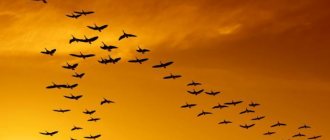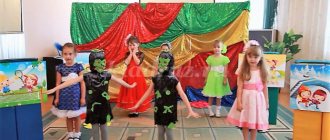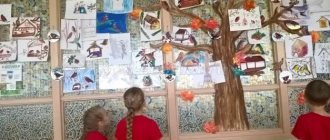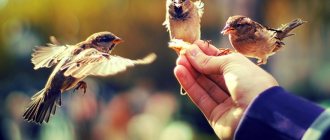Let's start a story about migratory birds
A modern child who grew up in an urbanized society and has reached preschool age should already know not only the objects around him, but also the living nature of his native land. It’s just quite difficult to tell a child about something he hasn’t seen himself. That is why it is worth carefully preparing for a story about migratory birds. First of all, you need to find thematic pictures with names and images of not only migratory birds, but also wintering ones, search the Internet for the sounds they make and their singing.
Try to collect representatives of migratory birds on one piece of paper, and wintering birds on the other, only each image must be labeled.
For example, migratory ones include:
- finch,
- wagtail,
- song thrush,
- redstart,
- Chiffchaff,
- swallow,
- forest pipit,
- robin,
- lapwing,
- lark,
- oriole.
And for winterers:
- sparrows,
- crow,
- tits,
- bullfinches,
- pigeons,
- owls,
- woodpeckers,
- fourty.
Visualization will allow children not only to replenish their vocabulary with new names for wildlife, but also to relate what they hear to specific images.
To consolidate knowledge, you can make an additional Whatman paper with images of birds, where migratory and wintering birds will be collected together for children. After the baby gets acquainted with all the flyers, let him tell you what each of them is called, which birds fly south, which ones remain for the winter. It is even more convenient and interesting to complete this task using a large magnetic board.
Conduct the conversation as a dialogue. For example, ask: “Is the tit a migratory bird or not? Where and when did you see her? Remember together what birds you have seen before, and why some are difficult to see during the day.
Features of migratory birds, their differences from wintering birds
The migratory birds depicted in the pictures do not stay in forests and cities as soon as the air begins to get colder. They can fly alone, they can gather in large groups - flocks, and fly to those regions where the climate is warmer.
Differences between migratory birds and wintering birds:
- With the onset of autumn, migratory individuals get ready to travel and fly away into the warmth;
- sedentary birds do not fly anywhere, remaining in the same place of residence;
- migratory birds cannot obtain food for themselves in winter; they do not have sufficient plumage to withstand the onset of cold weather;
- migratory birds nest in southern conditions.
Now you understand why changing weather forces some individuals to leave their permanent habitat and fly south.
A flock of seagulls flying south
Why do birds fly to warmer climes?
It will be interesting for children to learn the reasons for the departure of birds. Tell us that the birds that live in the field, in swamps and ponds, fly away for the winter, because the reservoirs freeze, and they cannot find food, because they cannot get frogs and fish; also in the field, all rodents hide deep in burrows The birds that live in the forest can no longer find insects in winter, which fall into deep sleep or die in the cold season.
Tell your child interesting facts about birds. For example, that they fly south for the winter, lining up in certain figures.
Birds can line up:
- straight front,
- crowded flock,
- joint,
- wedge
The flight of birds in a wedge or other shape is of particular importance. The wedge is built according to the principle: the strong and adults fly first, followed by the youngest and weakest. The leader of the group shows the way and, cutting through the air, helps the weak in flight.
Sometimes there are several leaders in a pack. They fly first in line so as not to get exhausted and go off course. Those who close the wedge constantly make sounds, encouraging the leaders and confirming their presence.
Find and show pictures of birds flying to children, even better if it is a video. It is well known that it is better to see once than to hear a hundred times.
Flying birds - video
You can tell an older child that migratory birds fly away not only during the onset of cold weather, but also in the middle of summer, that each species of the bird family behaves differently before flying.
Birds learn about the onset of cold weather and the need to fly away not from the newspaper or news; their instinct is more accurate in forecasts than the media. They always know exactly when to start preparing for a long flight, sometimes they even do test flights. The body of birds is also preparing for long routes. He begins to rebuild so that the bird is ready for difficult times.
Wintering birds around the world: wintering sedentary birds
Birds that do not leave their homeland in the cold are divided depending on their place of residence with the following classification: field birds (live in fields), forest birds (live in the forest), urban birds (live in cities). In addition, birds are predatory, insectivorous and omnivorous.
why don't all birds fly away in winter?
Why don’t all birds tend to fly away in winter? The fact is that the main reason for settling down is the ability to get food in snowy areas. Severe cold and frost do not have much effect; birds have a fairly large fat layer, lush plumage and a high body temperature (about 40 degrees). Also, not all birds are able to cover long distances due to the fact that they have a lot of weight; these include fairly large birds, such as black grouse, partridges and hazel grouse.
Can wintering birds roam from place to place? Yes they can! Wintering birds also include those birds that can fly in search of food within their habitat, i.e., they do not fly to warmer climes, but remain in their homeland. These include waxwings, goldfinches, jays, finches, and ringed birds.
what do birds eat in winter
What do wintering birds eat? The food source is: tree bark, cones, frozen berries on the branches of rowan and viburnum, insects and their larvae hidden among the branches and in the trunks.
Many people make supplies in advance and hide them in crevices, hollows and even in the snow. Birds with a special beak structure get their food without any problems, for example, a woodpecker has a long beak that can penetrate under the bark of a tree or remove fallen seeds from the snow. This advantage is also enjoyed by those with a beak such as, for example, that of the gar, which is strong and curved. Using this device will not be difficult to remove seeds from cones. Life is easier for feathered city dwellers; among them there are those who find food in garbage dumps among food waste.
when do birds hatch their chicks?
When do wintering birds breed? This is the period of the year when there is more food to be able to feed the chicks. It's spring and early summer. Among the representatives of birds there is a bird that, despite the cold, is capable of having offspring in the winter. This is a crossbill!
A person helps birds survive frosts and cold weather, makes feeders and puts cereals and bread crumbs there, and can treat tits with lard.
How do sedentary birds differ from migratory birds? Diet!
It remains unchanged throughout the year. Those who are not adapted to long flights find it much easier to endure the cold than to go on a long journey. Thus, the population is maintained without much loss. Let's take a closer look at some representatives of the wintering class.
bird species pigeon
nuthatch bird description
pika bird photo
bullfinch wintering bird
nutcracker bird description
magpie bird description
woodpecker bird description
white owl bird
goldfinch bird description
bird waxwing description
Why do birds return in the spring?
Try to find out your child’s opinion about why birds return to their homeland after wintering. The answer is, in fact, simple: in warm countries there is not enough space and food for everyone to build a nest and raise offspring. Birds are designed in such a way that if conditions are favorable for raising chicks, the brood becomes larger. Competition among species would destroy entire clans of birds. It is the care of future chicks that pushes the tailed parents to travel thousands of kilometers and return home.
What else is important for children to know about birds?
Include information about migratory birds and how they live in your message. Birdhouses, nests made of twigs in trees, made of clay and twigs under the roofs of residential buildings, as well as cages - all these are the apartments of birds. During your walks you can see these houses - don’t miss the opportunity to show them to your child. In addition, it will be interesting for the young naturalist not only to see, but also to make a birdhouse himself.
You can celebrate Bird Day with your children, which takes place on April 1st. Read more about this day below.
Have a picnic in nature, take the prepared birdhouses with you and hang them on the trees. Tell us which birds can choose this house for themselves and their chicks. Among them there may be not only starlings, but also sparrows, tits, and other flyers for which the size of the house will suit. Perhaps the next time you visit this place together, the voices of birds will already be heard there.
Video lesson “Migratory birds for children”
All about migratory birds for preschoolers and primary schoolchildren in games and tasks
For your activities and lessons, you can prepare a variety of hands-on activities for children that will give them a basic introduction to birds and help develop their hand motor skills and communication skills. By using small prizes for those who do well and for competition winners, you can encourage children to try their best to solve problems.
Poems and stories for children about migratory birds
Now you can find many books with fairy tales, poems, and riddles about migratory birds.
Here is a small list of children's writers and poets who wrote about flyers:
- Mikhail Prishvin,
- Korney Chukovsky,
- Vitaly Bianki,
- Dmitry Kedrin,
- Apollon Maikov,
- Boris Pasternak,
- Ivan Turgenev.
The child will be interested in listening to or reading interesting poems and stories about birds after a brief acquaintance with birds. Learn a poem with your child. This will help him not only improve his memory, but also remember your story for a long time.
Games and tasks
Quiet games with a bird theme
- There are many bird coloring pages online that can be printed on a regular printer. Children can color them with paints, pencils or felt-tip pens of different colors, depending on the type of bird.
- You can also use puzzles depicting birds with details of both small and large sizes.
- You can try organizing a competition for the best drawing. After printing out images of several types of birds, place them on the tables. Children will need to use these pictures as references to draw the birds themselves on a separate sheet of paper. Award prizes for the best, most creative, and most realistic drawing.
Games to develop attention
- Use the popular game “Memory”, making it yourself, for the development and education of children. For this game you need to print several types of birds on small cards: 2 images of each species. To make cards more durable, laminate them. Place the cards on the surface with the images facing down. Have the children come up and take turns turning over two cards. The child who finds the most pairs of identical birds will win.
- For another attention game, place pictures of birds on the board and ask children to look closely at them. Then the children will have to close their eyes (for example, turn away or, if they are sitting at tables, lower their heads onto its surface, after folding their hands), and at this time you will remove one of the pictures from the board. When they look at the board again, the first one to realize which bird is missing (flying away) will receive a small prize.
Feeding the birds
- Children, together with their parents, can make bird feeders, which they will then hang outside the window of their group or class. This will give you the opportunity to observe different birds flying to the feeder.
- Each child can make a feeder on their own, or you can break them up into groups. Place the pine cone on a piece of wax paper and have the kids coat it with the nut butter using a knife or spoon. Using another spoon, sprinkle birdseed over the peanut butter pine cone. You can also use nuts or sunflower seeds. Instead of a cone, you can use, for example, a large soft pretzel or a stale piece of white bread. Also coat it with peanut butter and sprinkle with food.
World environment theme migratory birds
why do birds fly to warmer climes?
The world of birds is rich and diverse; they are amazing creatures, many of which can fly long distances and successfully use this advantage. Their lifestyle is influenced by the climate of their native places and feeding habits (depending on the species). Flight to other places is associated with the change of season, when it begins to get colder outside, and bugs, spiders and worms begin to hide. But they are the main food for most birds that are the first to travel. A little later they are followed by those feeding on seeds and grains of plants. Waterfowl are the last to set off when the water bodies are covered with ice. The departure dates of birds may shift depending on the weather.
Why do birds come back in spring?
The instinct of procreation forces birds to return back to their homeland with the onset of spring. Why don't they stay in warm regions? Scientists put forward this version: a lot of birds fly to their wintering areas from different parts of the Earth. Thus, the number of birds greatly increases in a particular territory; they all need to build their nest houses, lay eggs from which offspring hatch, and eat. Every year the population will increase, even choosing a nesting site will become a problem. There will not be enough food for subsequent generations and they will die of hunger.
how birds prepare to fly
Travel requires a lot of effort from birds; in order to cover long distances, it is necessary to have a good meal before the flight. Following their inner instinct, birds begin to eat a lot and gain weight, their mass increases by no less than 15 percent, and sometimes even by 100 percent. Some flocks migrate mainly at night, when the sky is well lit by the moon, these include quails and woodcocks, but loons and geese do not depend on the time of day and continue their journey even during the day.
why do birds fly like a wedge
If you look at the sky in the fall, you will notice how birds fly - mainly in a wedge, since this method allows you to avoid the vortex-like flows of air masses that arise as a result of the flapping of their wings. And the one flying in front creates an air flow with the movement of his wings, as a result of which the birds following him save energy. The “leader” is in constant tension and from time to time he is replaced by another to give him the opportunity to rest.
speed of migratory birds
The speed of the flock is quite high and can range from 30 to 80 km per hour, but there are also record holders who accelerate up to 300 km.
height of migratory birds
The flight altitude reaches 1.5 km, since in this airspace there is rarefied air, which has the least resistance. But mountain geese fly 1000 km above sea level. They migrate to India and have to fly over the Himalayas (the height of the mountains is 9 thousand meters).
migratory bird route
bird flyways
With the onset of warm days in their native lands, birds begin to return to begin the process of breeding - building nests and laying eggs. They have the opportunity to feed the chicks, as insects wake up and earthworms come to the surface. Trees and plants scatter seeds, ice melts on reservoirs, and there is also a lot of food for waterfowl - frogs, small fish.
Since the list of migratory birds is very large, we will list some of them.
white-browed bird: description
shore swallow: description
common redstart: description
woodcock bird description
bird barn swallow: description
gray heron photo: description
black-headed gull
common kestrel
quail bird
migratory birds names list
In addition to the above, migratory ones include:
